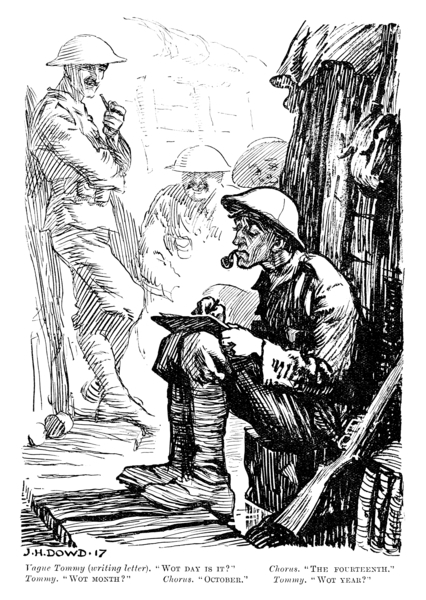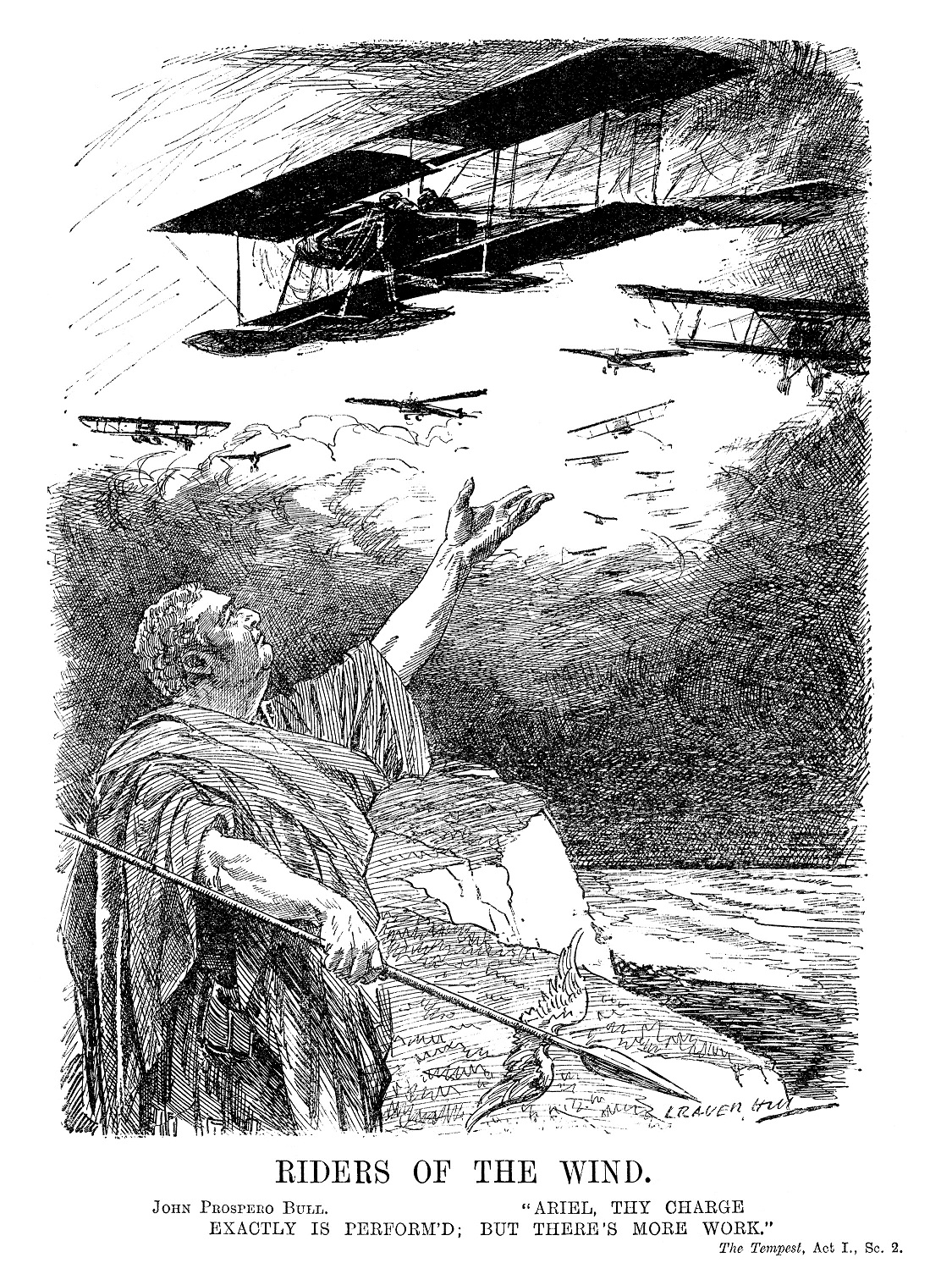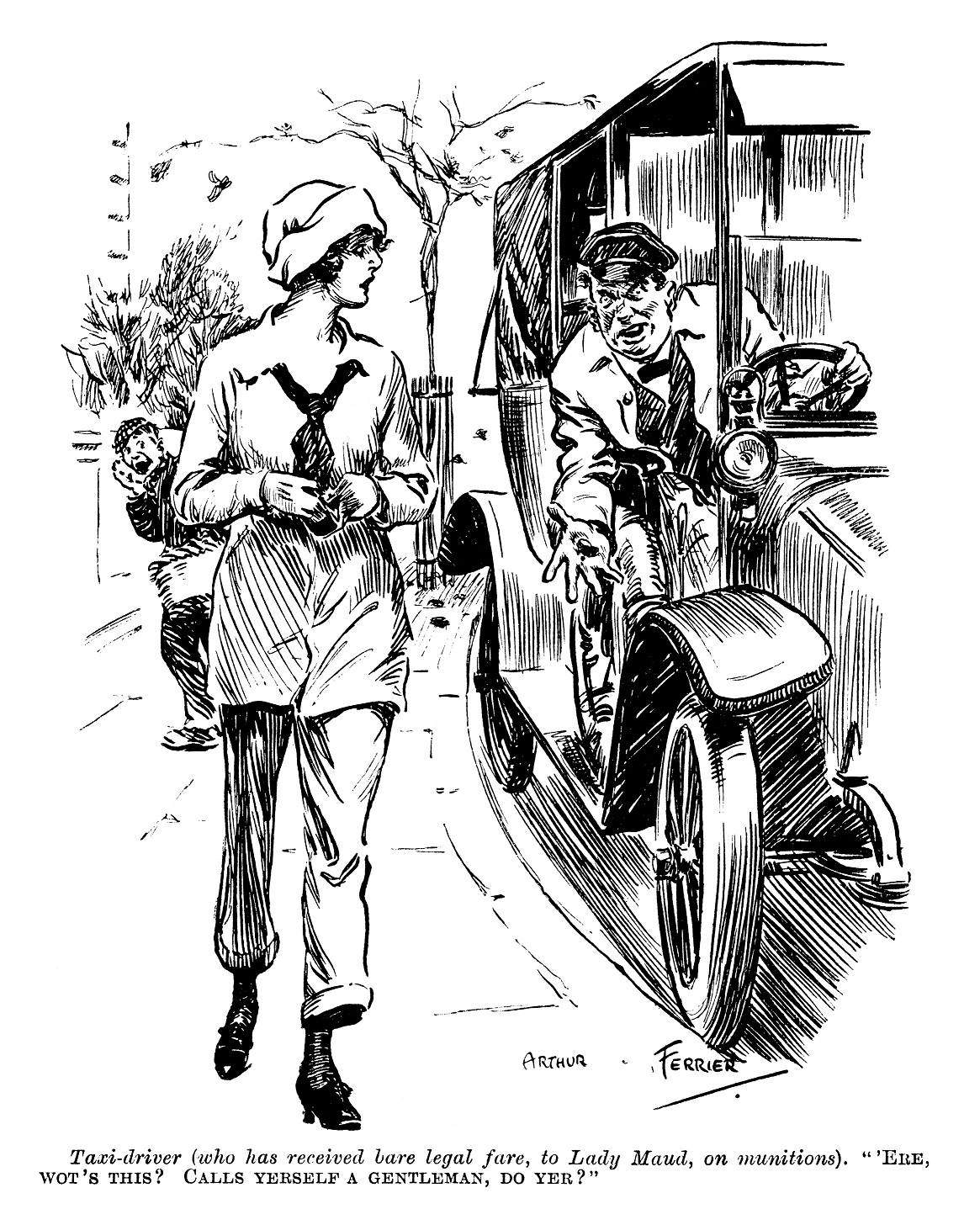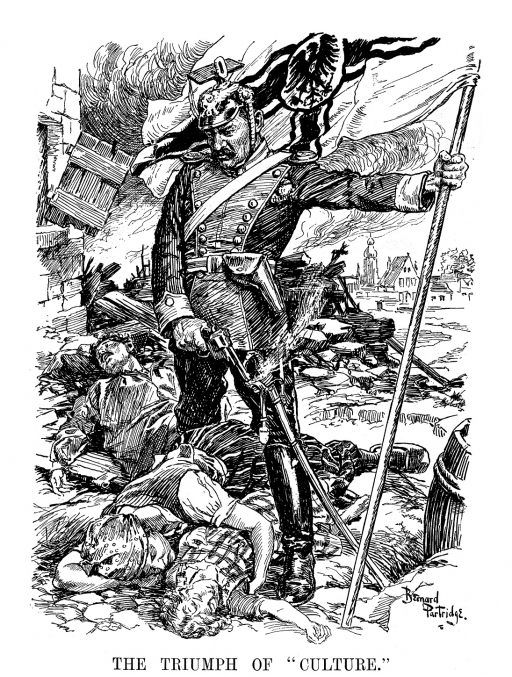First World war cartoons and articles from the British satirical magazine Punch are being made available online as part of a new digital archive.
The archive will cover the whole 150 year history of the magazine but includes the years of the First World War when it had an influential role.
The Punch Historical Archive delivers 200,000 pages of the complete run of Punch from 1841 to 1992 including prose from some of England’s finest comic writers.
Cartoons like Partridge’s The Triumph of ‘Culture’ of Kaiser Wilhelm II at the onset of the Great War can be found alongside James Dowd’s wistful Tommy in the trenches.
 James Dowd’s wistful Tommy. Courtesy of Punch.
James Dowd’s wistful Tommy. Courtesy of Punch.
Liverpool’s John Moores University is collaborating with the project to encourage new ways of looking at the magazine and using it as a teaching resource.
Dr Clare Horrocks, a senior lecturer, Humanities, at the University and an expert on Punch, told Centenary News other First World War satirical magazines like the Wipers Times took the format of Punch.
“What you get with Punch at this time is the magazine trying to use comedy to diffuse tensions. Punch was very much sent out from the Home Front with a box of sweets.
“People have criticised Punch because it wasn’t really engaging with what was happening out on the Front itself but in that way it was very much seen as nostalgic old England.
 Cartoon 1915. Courtesy of Punch
Cartoon 1915. Courtesy of Punch
“Part of this was down to its editor Owen Seaman who was quite a gentleman and ex academic and Conservative and he very much didn’t want to get involved with the politics of the war particularly from 1914.”
The debate among historians has been how supportive and patriotic Punch was and how it maintained this stance through the war. Dr Horrocks believes the archive will help.
“I think when people look at Punch they should look at it responding to events as they happen so although it is a weekly publication a lot of the news in publications like The Times are being responded to.
“That is one of the things with the new Punch historical archive is going to be interesting. You are going to be able to read it alongside other publications like The Times which will help to make sense of some of the illusions which are in there.
“At the beginning you have lampooning of some of the key figures, Austria and Germany the Kaiser, but then I think the social aspects come out a lot more and what the cost of the war is. They are reporting on events which are happening across Europe at that time.
“Punch is focusing a lot more on things back home like women having to step up and take employment, the land girls and things like that. So I think it does become more of the idea of the social cost of what is happening and that is a safer topic in some ways.”
 1918 cartoon reflecting changing status of women. Courtesy Punch.
1918 cartoon reflecting changing status of women. Courtesy Punch.
Punch had always been priced a threepence but doubled its’ price to sixpence in March 1917. It was also promoted as a nostalgic brand with spin-off almanacks and pocket-book diaries.
“I think that’s why at this time Punch would be seen in this nostalgic way because it is seen as a brand that people knew that had been around for a long time.”
Dr Horrocks uses Punch to show students the history and direction of English satire and how it has been used to tackle difficult subjects.
“Students have found Punch really interesting. You have the Russian bear and the British lion. In some ways some of those traditions have continued and students can follow those patterns to today.”
The Punch Historical Archive, 1841–1992 is available as a subscription or one-off purchase to all academic, public and government libraries and forms part of the Gale NewsVault programme, a cross-searchable collection of more than 13 million pages of newspaper and magazine archives, including theTimes Digital Archive, the Daily Mail Historical Archive and the Independent Digital Archive
The Punch Historical Archive, 1841–1992 from Gale, part of Cengage Learning.
